|
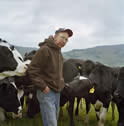 Safe Drinking Water Safe Drinking Water
Tom Hutson, New York
Millions of New York City residents have clean drinking water, thanks to help from healthy farms in the Catskill Mountains and farmers like Tom Hutson. Hutson was one of the first farmers to participate in programs administered by the Watershed Agricultural Council (WAC) to reduce organic pollution in the Catskill/Delaware reservoir systems. more
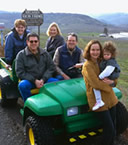 Fewer Pesticides Fewer Pesticides
The Bailey Family, Oregon
The Baileys are five generations working to ensure the health of their consumers and their community. They have been using Integrated Fruit Production practices that includes more efficient and responsible pest management, irrigation practices and control of weeds without residual herbicides. The Baileys are dedicated to a healthier environment and sharing their stewardship practices with other farmers and members of the agricultural community. more
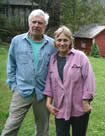 Jim and Moie Crawford, Pennsylvania Jim and Moie Crawford, Pennsylvania
“Creating a healthy, naturally balanced environment is good for us and for our productivity and profitability. And we think it’s the right thing.” The Crawfords have perfected a cropping system that relies on innovative plant rotations, fertility management and cover cropping. Cover crops—non-cash crops planted for soil-enhancing benefits—add organic matter, fix nitrogen and restore nutrients that may have leached during the off-season. more
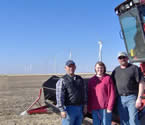 cleaner air cleaner air
The Russell Family, Illinois
For the Russells, windmills offer the promise of clean energy to light homes and fuel industry—and an environmentally friendly income stream to help keep their farm profitable and family-owned. The three brothers and two sisters farm corn and soybeans together through a family trust, no-till two-thirds of the ground and have six brand new windmills situated on their 560 acre farm. more
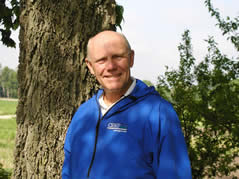 Dave Legvold, Minnesota Dave Legvold, Minnesota
Dave is growing corn, soybeans and hay on his 700 acre farm and helping to reduce the amount of greenhouse gases in the Earth’s atmosphere. By using a “no-till” method that requires fewer tractor passes and gives soil a rest, the Minnesota farmer is burning less fossil fuel and sequestering carbon in the soil to offset greenhouse gasses. He’s also introducing other farmers to the “BMP Challenge,” a program that makes it easier for farmers to use healthy practices without risking their income. more
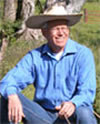 Home for Wildlife Home for Wildlife
Steve Sinton, California
Steve uses a variety of proactive and innovative practices on his ranch to promote sustainability and protect wildlife habitat. Oak trees have never been removed from the 18,000 acre ranch; the Tule Elk herd has lived there for the past 20 years; and parts of the ranch are designated as within the Machesna Wilderness Area—protecting the nesting ground of the California Condor. more
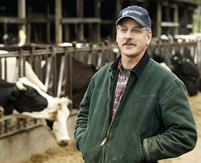 Jay Gordon, Washington Jay Gordon, Washington
Driving down a highway in northwestern Washington, en route from a meeting in his role as director of the Washington State Dairy Federation, Jay Gordon can’t help but ponder whether some of the state’s highway beautification money would be better spent protecting the Skagit Valley farmland that provides feeding habitat to a quarter of the world’s Trumpeter Swans. more
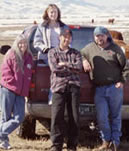 Healthy land Healthy land
The McNeil Family, Colorado
The McNeil family ranches in one of the last undeveloped stream corridors in the 8,000 square mile San Luis Valley. To keep it that way, the McNeils spearheaded the Rock Creek Heritage Project, a landowner-driven effort to protect 15,000 acres of farm and ranch land in the Rock Creek watershed. The multi-faceted project, which involves 27 landowners, includes land protection, watershed enhancement and training in holistic management. more
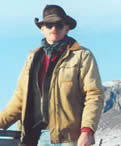 Steve Percy, Idaho Steve Percy, Idaho
Steve Percy, a fourth-generation rancher, has experienced first-hand the urban pressure on agriculture. Seventeen years ago, as development created more crowding, he gave up ranching in southern California and moved to Idaho. Now, his ranching practices are helping to restore land east of Boise. “Maybe we’ll realize the importance [of land] when food gets to be as expensive as gas. You can park your car, but you can’t park your appetite.” more
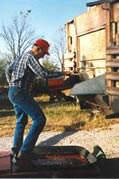 Renewable Energy Renewable Energy
Glen Riekhof, Missouri
For years, Glen Riekhof, a farmer from Concordia, contributed countless hours of research and meetings to make Missouri’s first ethanol plant a reality. Still, Riekhof doesn’t see ethanol transforming the way he manages his land or produces his crops.
“I feel like ethanol is a good hedge for me, but I haven’t changed my cropping patterns much and I don’t plan to,” says Riekhof. “On my ground, planting corn after corn is not the best idea.” more
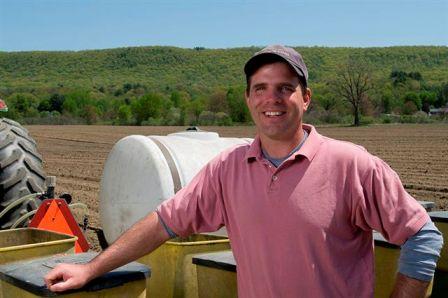 Peter Melnik, Massachusetts Peter Melnik, Massachusetts
Massachusetts dairy farmers don’t have the land base to expand into 1,000 or 2,000 cow herds, according to Peter Melnik, a fourth-generation dairyman from Deerfield. Instead, he believes diversity
is the key to preserving his family’s 250-cow farm. more
|

 Safe Drinking Water
Safe Drinking Water Fewer Pesticides
Fewer Pesticides Jim and Moie Crawford, Pennsylvania
Jim and Moie Crawford, Pennsylvania cleaner air
cleaner air Dave Legvold, Minnesota
Dave Legvold, Minnesota  Home for Wildlife
Home for Wildlife Jay Gordon, Washington
Jay Gordon, Washington Healthy land
Healthy land Steve Percy, Idaho
Steve Percy, Idaho Renewable Energy
Renewable Energy Peter Melnik, Massachusetts
Peter Melnik, Massachusetts